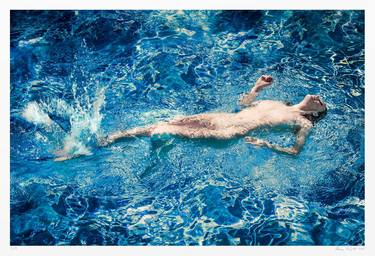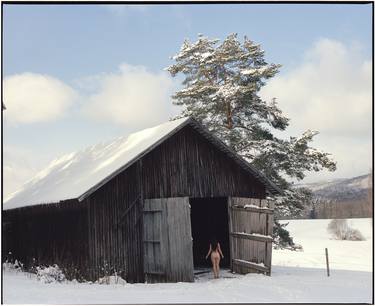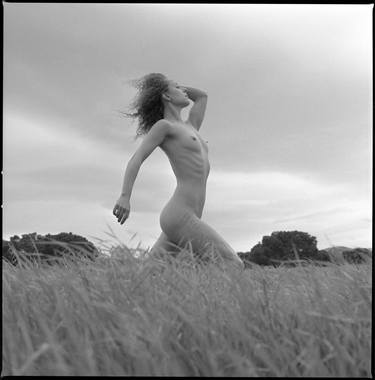Nude Photography For Sale
Browse art and see similar matches
Try Visual Search
Category
Filter (1)
Filter
Category
Style
Subject
Medium
Material
Price
Size
Orientation
Color
Artist Country
Featured Artist
Photography, 27 W x 27 H x 0.1 D in
United States
$1,920
Photography, 21 W x 20 H x 0.1 D in
United States
$2,810
Photography, 40 W x 40 H x 0.1 D in
United States
$2,890
Photography, 40 W x 40 H x 0.1 D in
United States
$2,890
Tree Hugger - Limited Edition of 5
Photography, 40 W x 40 H x 0.1 D in
United States
$2,890
Photography, 29.9 W x 44.9 H x 0.1 D in
Ukraine
$950
Prints from $79
Nude Yoga # 87 Limited - Limited Edition of 1
Photography, 31.5 W x 47.2 H x 0.1 D in
Germany
$529
Prints from $100
Photography, 36 W x 24 H x 0.1 D in
United States
$1,095
Scattered I (2009) - Limited Edition of 12
Photography, 35.4 W x 44.1 H x 0.1 D in
United Kingdom
$3,650
Touching (from Till Death Do us Part), Edition 4/10
Photography, 9.4 W x 7.9 H x 0.1 D in
United States
$350
Madeleine @ Renthof Limited #13 - Limited Edition of 1
Photography, 29.5 W x 39.4 H x 0.1 D in
Germany
$509
Prints from $50
Photography, 27.6 W x 41.3 H x 0.1 D in
Poland
$1,500
Photography, 24 W x 26.5 H x 0.2 D in
United States
$1,570
Silent Thunder - Limited Edition of 5
Photography, 30 W x 30 H x 0.1 D in
United States
$1,630
Vivienne VII (Desert Nudes) - Limited Edition of 10
Photography, 7.9 W x 7.9 H x 0.1 D in
United States
$430
The Woman and the Barn 4 (large)
Photography, 43.3 W x 35.4 H x 0.1 D in
United Kingdom
$3,350
Photography, 31.9 W x 40.9 H x 1 D in
Germany
$1,460
Prints from $100
The Woman and the Barn 5 (large)
Photography, 43.3 W x 35.4 H x 0.1 D in
United Kingdom
$3,350
Emi Hotel Room Art Box Aluminium #1 - Limited Edition of 1
Photography, 57.2 W x 41.4 H x 1 D in
Germany
$2,399
Prints from $100
Wild Things (Till Death do us Part)
Photography, 7.9 W x 7.9 H x 0.1 D in
United States
$430
Photography, 40 W x 40 H x 0.1 D in
United States
$2,890
Madeleine Piano Stretch # 6 - Limited Edition of 5
Photography, 29.5 W x 39.4 H x 0.1 D in
Germany
$379
Prints from $40
Photography, 27.6 W x 39.4 H x 0.1 D in
United Kingdom
$955
Eternal youth "12" - Limited Edition of 15
Photography, 16.5 W x 23.6 H x 0.1 D in
Ukraine
$671
Prints from $100
Nude - Tattoos in Nature, Silver Gelatin Print - Limited Edition of 15
Photography, 16 W x 20 H x 0.3 D in
United States
$929
Photography, 20 W x 20 H x 0.1 D in
United States
$950
Nature One Art Box Limited #11 - Limited Edition of 1
Photography, 41.4 W x 49.3 H x 1 D in
Germany
$2,349
Prints from $100
Monique Ground Zero Limited #1 - Limited Edition of 1
Photography, 59.1 W x 19.7 H x 0.1 D in
Germany
$479
Nude In The Wind, Silver Gelatin Print - Limited Edition of 5
Photography, 16 W x 20 H x 0.3 D in
United States
$929
Photography, 23.4 W x 23.4 H x 0.1 D in
Japan
$1,950
Prints from $100
Photography, 23.6 W x 23.6 H x 0.4 D in
France
$530
Prints from $100
Celebrate, Good Times, Yahoo! - Limited Edition of 6
Photography, 54 W x 24 H x 0.1 D in
United States
$970
Morning with a mermaid - Limited Edition 1 of 5
Photography, 35.4 W x 23.6 H x 0.1 D in
Ukraine
$841
Prints from $81
Photography, 15.7 W x 23.6 H x 0.1 D in
Germany
$570
Mia Floating - Limited Edition 3 of 6
Photography, 18 W x 27 H x 0.1 D in
United States
$475
Photography, 16.1 W x 23.6 H x 0.4 D in
Germany
$760
Forward - Limited Edition of 15
Photography, 16 W x 24 H x 0.1 D in
United States
$1,050
Photography, 33.1 W x 47.2 H x 1.2 D in
France
$1,100
Prints from $79
Nude - Roarie XV - Limited Edition 3 of 30
Photography, 11.7 W x 16.5 H x 0.1 D in
United Kingdom
$520
BEAUTIFUL MONSTER (XI). 1/9, SMALL EDITION
Photography, 15.7 W x 19.7 H x 0.1 D in
Spain
$1,620
Poppy Wants a Cracker - Limited Edition of 10
Photography, 40 W x 40 H x 0.1 D in
United States
$1,890
Photography, 20 W x 16 H x 0.1 D in
United Kingdom
$440
Prints from $95
Rakete Doomed Framed Art Box Museum Quality
Photography, 41.4 W x 53 H x 1 D in
Germany
$2,159
Prints from $100
Nude Yoga # 27 Limited - Limited Edition of 1
Photography, 61.8 W x 46.1 H x 1 D in
Germany
$4,119
Prints from $100
Yvi Alu Dibond Art Box Limited #4 - Limited Edition of 1
Photography, 32 W x 41.3 H x 0.1 D in
Germany
$1,549
Prints from $40
Monique Hands Limited #1 - Limited Edition of 1
Photography, 15.7 W x 23.6 H x 0.1 D in
Germany
$209
Prints from $40
Photography, 16.5 W x 11.7 H x 0.1 D in
Italy
$1,570
Nude Yoga #72 Limited - Limited Edition of 1
Photography, 23.6 W x 23.6 H x 0.1 D in
Germany
$269
Prints from $40
Photography, 23.6 W x 31.5 H x 0.1 D in
Germany
$349
Underwater Nude, Untitled #05 – Edition of 9
Photography, 32 W x 24 H x 0.2 D in
United States
$2,170













































